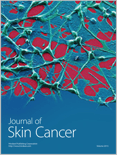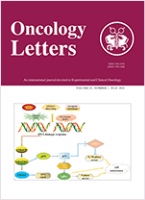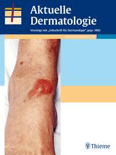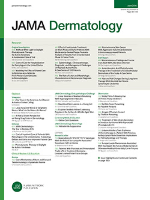
Journal of Skin Cancer
Scope & Guideline
Innovating Strategies for Skin Cancer Diagnosis and Treatment
Introduction
Aims and Scopes
- Clinical Management of Skin Cancer:
The journal covers research related to the management and treatment of various types of skin cancers, including melanoma and non-melanoma skin cancers, focusing on innovative therapies and clinical outcomes. - Epidemiological Studies and Risk Factors:
It includes studies exploring the epidemiology of skin cancer, risk factors associated with different populations, and the impact of genetic and environmental factors on skin cancer incidence. - Public Health and Education:
Research on public awareness, attitudes, and practices regarding skin cancer prevention and detection is a significant focus, highlighting the importance of education in reducing skin cancer rates. - Technological Advancements in Diagnosis:
The journal emphasizes the development and application of new technologies for the diagnosis of skin cancer, including non-invasive methods and machine learning approaches. - Histopathological and Clinical Research:
It includes in-depth analyses of histopathological characteristics of skin cancers, contributing to a better understanding of disease progression and treatment outcomes.
Trending and Emerging
- Targeted Therapies and Immunotherapy:
Recent publications highlight a growing interest in targeted therapies and immunotherapy for skin cancers, particularly melanoma, reflecting advancements in personalized medicine. - Non-invasive Diagnostic Technologies:
There is an increasing trend towards research on non-invasive optical technologies and machine learning algorithms for skin cancer diagnosis, signaling a shift towards more patient-friendly diagnostic methods. - Risk Perception and Behavioral Studies:
Emerging themes focus on understanding risk perception and behaviors related to tanning and sun exposure, particularly among vulnerable populations such as adolescents and sexual minorities. - Global and Cultural Perspectives on Skin Cancer:
Recent studies are investigating skin cancer prevalence and risk factors in diverse populations, indicating a trend towards a more global perspective in skin cancer research. - Integration of Vitamin D Research:
The role of Vitamin D in skin cancer prevention and treatment is gaining traction, with increasing research on its therapeutic potential and implications for patient care.
Declining or Waning
- Traditional Therapeutic Approaches:
There appears to be a declining focus on conventional surgical methods and therapies, as the journal increasingly emphasizes innovative and targeted therapies for skin cancer. - General Awareness Studies in Non-specific Populations:
Research aimed at general awareness of skin cancer in broad populations is becoming less prominent, as more specific studies targeting high-risk groups are favored. - Case Studies with Limited Generalizability:
The publication of case studies that lack broader applicability is decreasing, as the journal seeks more comprehensive studies that can inform larger populations.
Similar Journals

Oncology Letters
Empowering Oncology with Groundbreaking DiscoveriesOncology Letters is a prominent academic journal dedicated to disseminating high-quality research in the fields of oncology and cancer research. Published by SPANDIDOS PUBL LTD and based in Greece, this journal has established a significant presence since its inception in 2010 and continues to contribute to the scientific community with a focus on both clinical and experimental oncology. Notably, it holds a respectable Q3 ranking in the categories of Cancer Research and Oncology as of 2023, highlighting its relevance and contribution to these critical fields. With a Scopus rank of #139/404 in Medicine – Oncology and #117/230 in Biochemistry, Genetics, and Molecular Biology – Cancer Research, Oncology Letters serves as a valuable platform for researchers, professionals, and students alike to explore emerging findings and innovative treatment approaches. Though it operates within a traditional subscription model, this journal prides itself on fostering accessible and impactful discourse in oncology, making it an essential resource for those committed to advancing cancer research and improving patient care.

DERMATOLOGIC CLINICS
Leading the Way in Dermatology: Where Research Meets PracticeDERMATOLOGIC CLINICS is a leading journal in the field of dermatology, published by W B SAUNDERS CO-ELSEVIER INC. Since its inception in 1983, the journal has consistently provided a platform for the dissemination of high-quality research and clinical insights, earning its place in the prestigious Q1 quartile for dermatology in 2023. With a Scopus ranking of #34 out of 142 in its category and a commendable 76th percentile, DERMATOLOGIC CLINICS remains essential reading for clinicians, researchers, and students alike. The journal features comprehensive reviews and original articles that address the latest advancements and challenges in dermatologic diagnostics and treatments. Though it does not offer Open Access, it is widely accessible ensuring a broad readership. With a commitment to advancing the understanding of skin disorders, DERMATOLOGIC CLINICS continues to uphold its legacy of excellence in dermatological scholarship.

CONTACT DERMATITIS
Transforming Understanding of Skin ReactionsCONTACT DERMATITIS, published by WILEY, is a leading international journal focused on the vital field of dermatology, particularly examining the diagnosis, treatment, and management of contact dermatitis and related skin conditions. With origins dating back to 1975 and a planned convergence period extending to 2024, this esteemed journal serves as a crucial resource for researchers, clinicians, and healthcare professionals dedicated to advancing knowledge in dermatological practices. In the latest rankings, it has achieved a commendable Q2 classification in Dermatology and Q3 classification in Immunology and Allergy for 2023, underscoring its significance within these dynamic fields. Moreover, it holds a notable ranking of #29/142 in Medicine & Dermatology and #130/233 in Medicine & Immunology and Allergy according to Scopus metrics, placing it in the top tier of scholarly publications. While the journal operates on a subscription basis, its comprehensive reviews, original articles, and insightful research findings are invaluable for pushing the boundaries of current dermatological and immunological knowledge. By fostering a deeper understanding of the complexities of skin reactions and their implications, CONTACT DERMATITIS plays a vital role in connecting research with clinical practice, making it an essential read for anyone engaged in the field.

Acta Dermatovenerologica Croatica
Innovating Treatments, Enhancing LivesActa Dermatovenerologica Croatica is a premier journal dedicated to the fields of dermatology and venereology, published by the Croatian Dermatovenereological Society. Established in 1994, this journal has been a vital platform for disseminating research and advancements in the understanding and treatment of skin diseases and sexually transmitted infections. Although it is currently classified in the Q4 quartile for dermatology, infectious diseases, and miscellaneous medicine, it provides a unique opportunity for emerging researchers and seasoned professionals to contribute to a growing body of knowledge. Based in Zagreb, Croatia, the journal emphasizes free access to information that enhances clinical practices and scientific understanding among dermatologists and venereologists worldwide. As the journal approaches its 30th anniversary, it continues to aim for excellence in research quality, fostering collaboration, and innovating in the ever-evolving fields it represents.

JOURNAL DER DEUTSCHEN DERMATOLOGISCHEN GESELLSCHAFT
Empowering knowledge in the field of dermatology.JOURNAL DER DEUTSCHEN DERMATOLOGISCHEN GESELLSCHAFT, published by Wiley, is a prominent periodical in the field of dermatology, recognized by its Q2 quartile ranking in the 2023 dermatology category. With a dedicated focus on advancing knowledge in dermatological science, the journal publishes rigorous peer-reviewed research that encompasses a range of topics including clinical studies, research methodologies, and innovative treatment practices in dermatology. Its impact is reflected in its Scopus ranking, where it stands at #48 out of 142 in the medicine dermatology category, placing it in the top 66th percentile. Although not an Open Access journal, it serves as a critical resource for researchers, clinicians, and students alike, facilitating the dissemination of high-quality research findings and fostering a deeper understanding of dermatological conditions and treatments. With years of convergence from 2003 to 2024, this journal remains a vital platform for scholarly dialogue and discovery in dermatology.

AKTUELLE DERMATOLOGIE
Advancing Dermatological Knowledge for Tomorrow's CareAKTUELLE DERMATOLOGIE is a distinguished journal in the field of Dermatology, published by GEORG THIEME VERLAG KG in Germany. With a commitment to advancing knowledge and practice in dermatological science, the journal has regularly featured research articles, reviews, and case studies since its inception in 1975 and continues to publish contributions through 2024. Despite being categorized in the lower quartile (Q4) of dermatology journals and holding a Scopus rank of #127 out of 142, it plays a pivotal role in disseminating valuable insights that support ongoing education and research in the discipline. The journal provides an essential platform for both seasoned professionals and budding researchers to share their findings, explore emerging trends, and discuss clinical practices, all while serving the needs of an evolving medical landscape. Access to its content may be restricted, but the journal remains a crucial reference for those invested in the future of dermatological research and patient care.

JAMA Dermatology
Championing Open Access for Global Dermatological Progress.JAMA Dermatology, an esteemed publication by the American Medical Association, is positioned at the forefront of dermatological research and clinical practice. With an ISSN of 2168-6068 and an E-ISSN of 2168-6084, this journal underscores a commitment to disseminating high-quality and impactful research within the field. Notably ranked Q1 in both Dermatology and Miscellaneous Medicine for 2023, JAMA Dermatology ranks among the top journals in its category, holding the impressive 3rd position out of 142 in Scopus's dermatology rankings, placing it in the 98th percentile. With converged years extending from 2013 to 2024, the journal emphasizes timely and critical advancements in dermatological science. Furthermore, as a champion of open access, it encourages a broad dissemination of knowledge, making essential research accessible to a wider audience. Researchers, professionals, and students alike will find JAMA Dermatology to be an invaluable resource for the latest findings, innovative therapies, and in-depth reviews that shape the future of dermatological health.

CLINICAL AND EXPERIMENTAL DERMATOLOGY
Bridging the Gap Between Clinical and Experimental Dermatology.CLINICAL AND EXPERIMENTAL DERMATOLOGY is a prominent journal in the field of dermatology, published by Oxford University Press. With an ISSN of 0307-6938 and an E-ISSN of 1365-2230, this journal has been a vital resource for researchers and practitioners since its inception in 1976. Recognized as a Q2 journal within the category of dermatology for 2023, it holds a respectable position, ranking #54 among 142 journals in this discipline, placing it in the 62nd percentile on Scopus. The journal is dedicated to publishing high-quality research that spans clinical and experimental aspects of dermatological science, making it an essential source of knowledge for advancing understanding and treatment of skin disorders. Although it operates on a traditional subscription model without open access options, its contributions to the field are significant, influencing both clinical practices and academic research. Researchers, clinicians, and students alike will find vital insights and contemporary themes presented in its pages, supporting ongoing education and innovation in dermatology.

AUSTRALASIAN JOURNAL OF DERMATOLOGY
Empowering professionals with cutting-edge dermatological research.Australasian Journal of Dermatology is a leading publication in the field of dermatology, issued by Wiley since 1951, and reaching an audience of researchers, clinicians, and students interested in the latest advancements and practices in skin health. With an ISSN of 0004-8380 and an E-ISSN of 1440-0960, this journal stands out with its Q2 ranking in both Dermatology and Miscellaneous Medicine, positioning it within the top 61st percentile of its category according to Scopus. Although it does not provide Open Access options, Australasian Journal of Dermatology is committed to disseminating high-quality research that informs clinical practices and promotes scholarly dialogue. By publishing rigorous and peer-reviewed articles focused on various aspects of dermatological science, the journal plays a pivotal role in enhancing the dermatology community's understanding of skin conditions and treatments, making it an invaluable resource for professionals and students alike.

Annals of Dermatology
Connecting researchers and clinicians for skin health advancements.Annals of Dermatology is a prestigious academic journal published by the Korean Dermatological Association, focusing on the latest research and advancements in the field of dermatology. With a commitment to advancing knowledge in skin health and disease, this journal serves as a vital resource for researchers, clinicians, and students working in dermatology and related disciplines. Since its inception in 1989, it has evolved to consolidate its position in the academic community, boasting a Q2 ranking in the 2023 Dermatology category and a Scopus rank of #87 out of 142, placing it in the 39th percentile. Although it operates under a subscription model, the journal's impact factor reflects its significance in advancing dermatological research, attracting innovative studies and reviews that shape clinical practice. With a publication history extending from 1989 to 1996 and then from 2008 to the present, Annals of Dermatology continues to be an essential publication for those devoted to improving skin health.